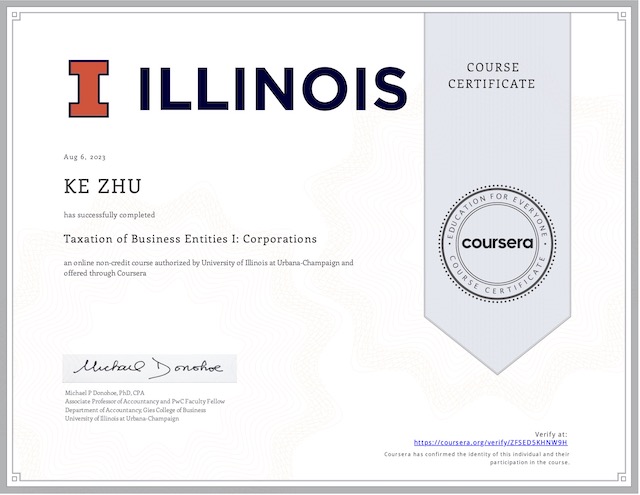Taxation of Business Entities I: Corporations University of Illinois at Urbana-Champaign Taxation is a very interesting perspective to observe and understand how business entities work. This course provides an introduction to the U.S. federal income taxation of corporations and their shareholders. The course is designed to cover entire lifecycle of a C corporation, from its…
Tag: Taxation of Business Entities I: Corporations
Basics of Corporate Reorganization
The term reorganization is often associated with financial difficulty, such as the reorganization of debts under state or federal bankruptcy laws. For taxes purposes, however, the term refers to any corporate restructuring or rearrangement, which can, but does not necessarily occur at the end of the corporate life cycle. The US tax system aims to encourage growth….
Tax Treatment for Corporate Liquidations
Partial liquidations takes place when there is a contraction or reduction of a corporation’s business activities. Complete liquidations occur at the end of a corporation’s life cycle. Surprisingly, the IRS Code does not define what complete liquidation is. Instead, Treasury regulations indicate that a complete liquidation exists for tax purposes. … when the corporation ceases to be a…
Corporate Stock Redemption
A stock redemption occurs when a shareholder sells stock back to the issuing corporation for cash or property. A redemption raises many important and potentially complex tax issues. If the shareholder who redeem stocks is the only shareholder, a stock redemption has no effect on his proportionate ownership interest in the corporation. In this case, if this redemption…
Corporate Non-Liquidating Distribution
As corporations operate, they can share their economic successes with shareholders by making distributions. However distributions are not necessarily required and different firms have different incentives and disincentives. From a tax perspective, it is necessary to classify distribution as: The term non-liquidating distribution implies that the distributions are not in an effort to wind up the affairs of the…
Taxation for Corporation Formation: Liabilities, Capital and Loss
Along with assets, corporate formation also routinely involves the transfer and assumption of liabilities. The corporation is taking responsibilities for such liabilities, but an important tax issue arises. Does the assumption of liabilities by the corporation (transferee) constitute boot received by the shareholder (transferer)? Assumption of Liabilities Recall that in addition to the stock of corporation, shareholders can also…
Taxation: Non-Recognition Rules for Corporate Formation
Important tax issues arise throughout the corporate lifecycle: its formation, operation and liquidation. The formation of a corporation generally involves the transfer of assets and liabilities by one or more persons in exchange for stock in the newly formed corporation. Property Transaction IRC subchapter O: Gain or Loss on Disposition of Property defines the rules for property…
Corporate Income Taxation
Regular Income Tax Liability The regular tax liability calculation itself is very straightforward: The complexity of corporate income tax thus stems from the rules and regulations that shape and define the tax base, i.e. corporate taxable income. For tax years beginning after 2017, the Tax Cuts and Jobs Act reduced the corporate tax rate to…
Essential Concepts of Business Taxation
Origin of Federal Taxation The first income tax in the US was enacted in 1634 by the Massachusetts Bay Colony. The federal government however did not initially adopt this form of taxation; in part because it did not have the authority to do so. It was not until 1787 that Article 1 Section 8 Clause…








